Are you curious about How Big Is A Soccer Field? A standard soccer field, also known as a pitch, varies in size, but generally ranges from 100 to 130 yards long and 50 to 100 yards wide. At HOW.EDU.VN, we delve into the specifics of soccer field dimensions, offering a comprehensive guide for players, coaches, and enthusiasts alike.
Understanding the intricacies of soccer pitch sizes and field dimensions enhances appreciation and strategic gameplay.
1. Soccer Field Dimensions by Age
What are the ideal soccer field dimensions for different age groups? FIFA and US Youth Soccer Association provide guidelines for soccer field sizes based on the players’ ages to ensure fair and developmentally appropriate gameplay. These guidelines are crucial for creating a positive experience for young players and fostering their skills.
Guidelines for Soccer Field Dimensions
Globally, FIFA recommends that children play soccer on smaller pitches than adults. In the United States, the US Youth Soccer Association sets guidelines that suggest children under 12 play on smaller fields for shorter durations.
Youth Soccer Field Size Charts
Here’s a breakdown of soccer field sizes by age group, according to the US Youth Soccer Association:
| Age | Game Format | Length (yds) | Width (yds) |
|---|---|---|---|
| Under 6 | 3 vs 3 or 4 vs 4 | 25-35 | 15-25 |
| Under 7 & 8 | 4 vs 4 or 5 vs 5 | 25-35 | 15-25 |
| Under 9 & 10 | 6 vs 6 or 7 vs 7 | 55-65 | 35-45 |
| Under 11 & 12 | 8 vs 8-11 vs 11 | 70-80 | 45-55 |
| Under 13+ | 11 vs 11 | 100-130 | 50-100 |

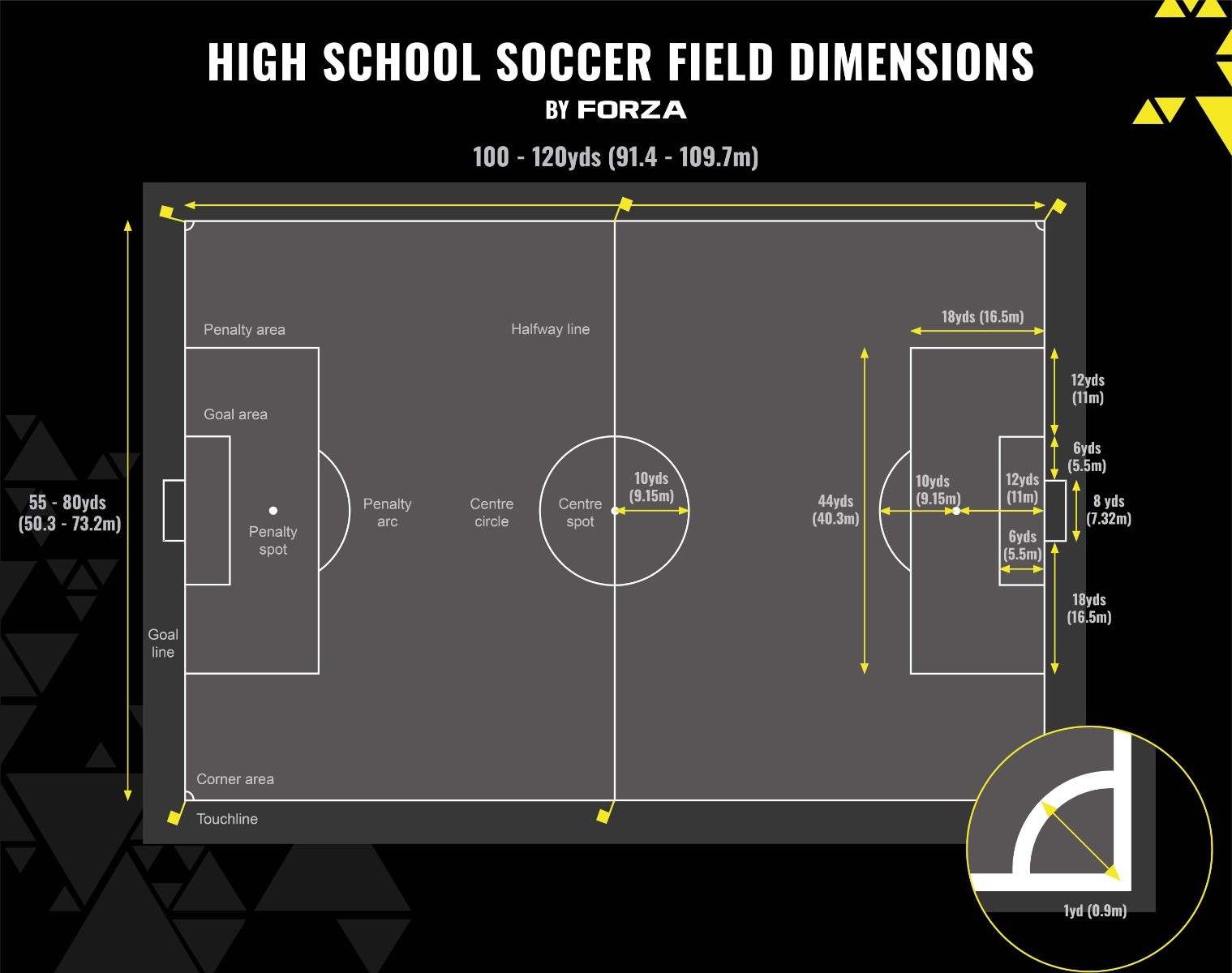
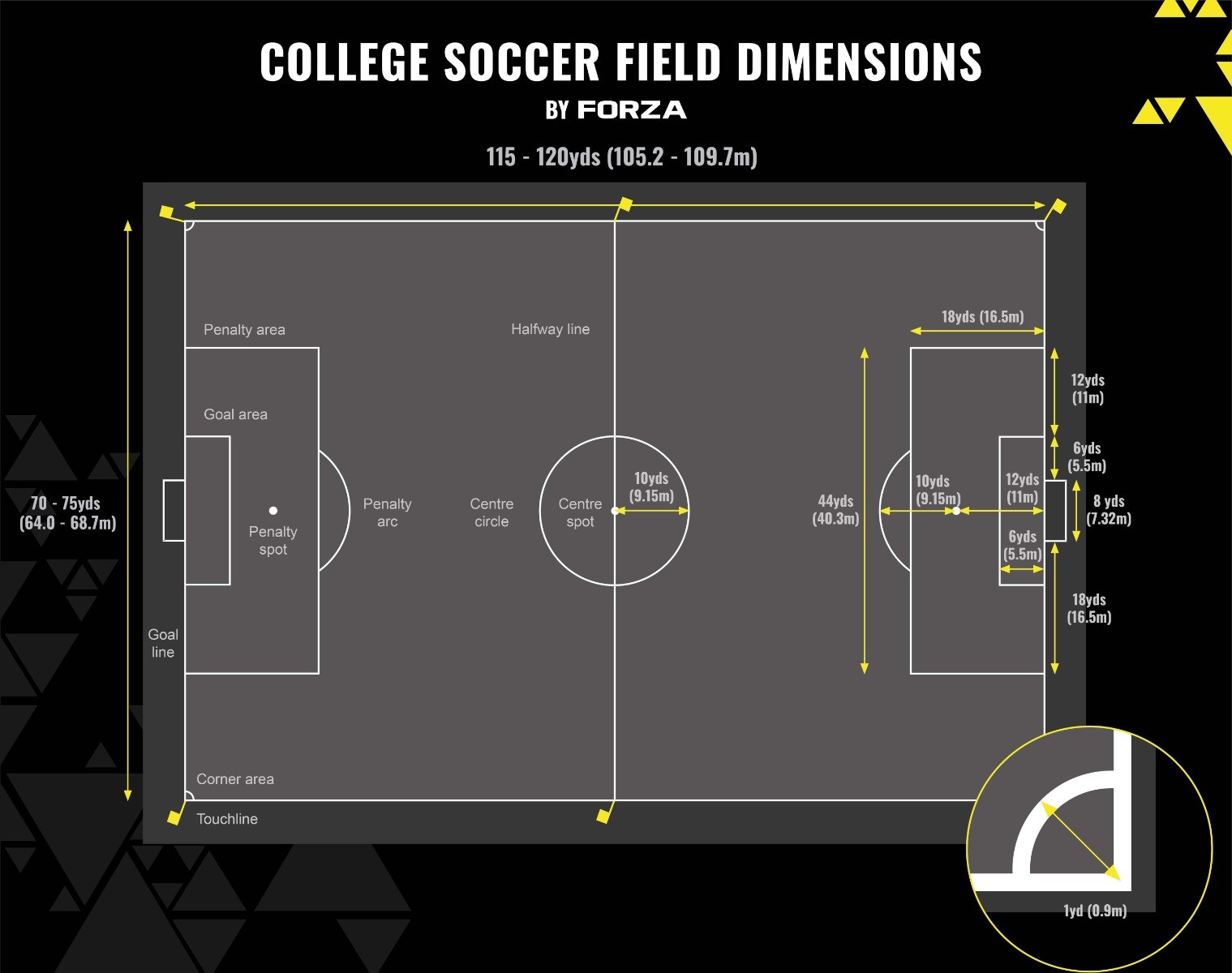
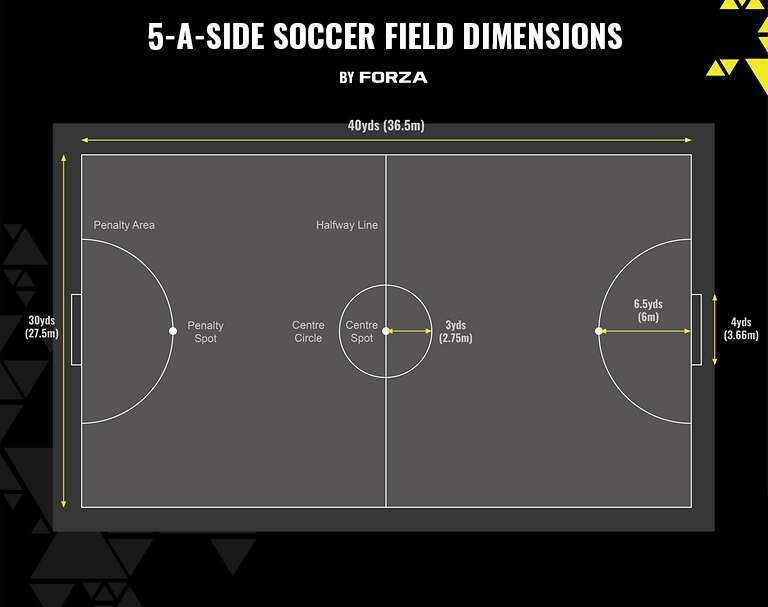
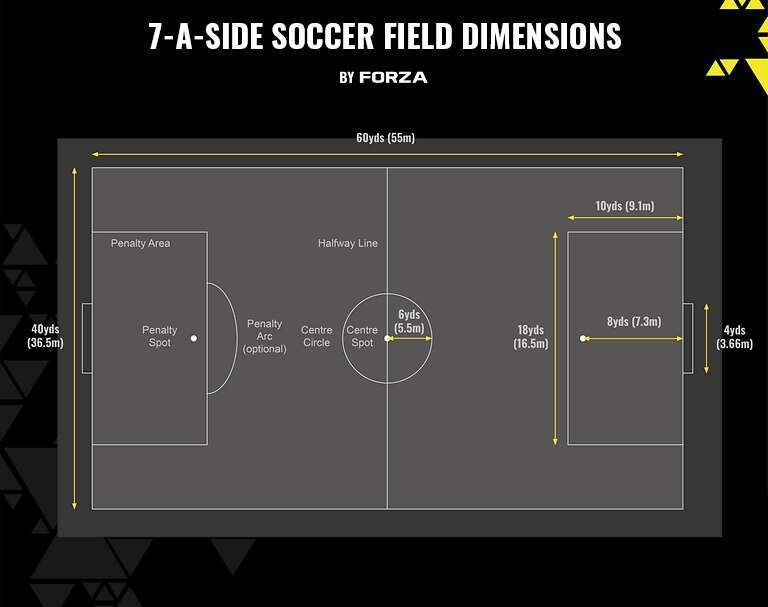
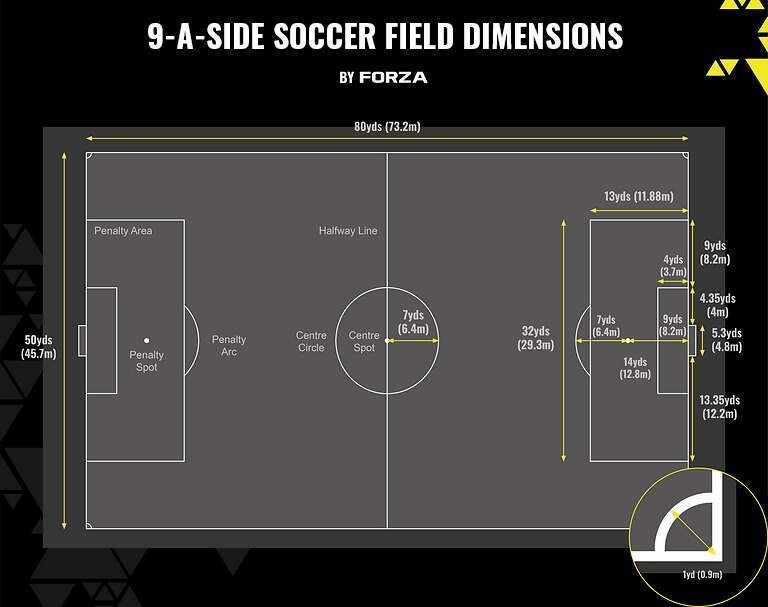
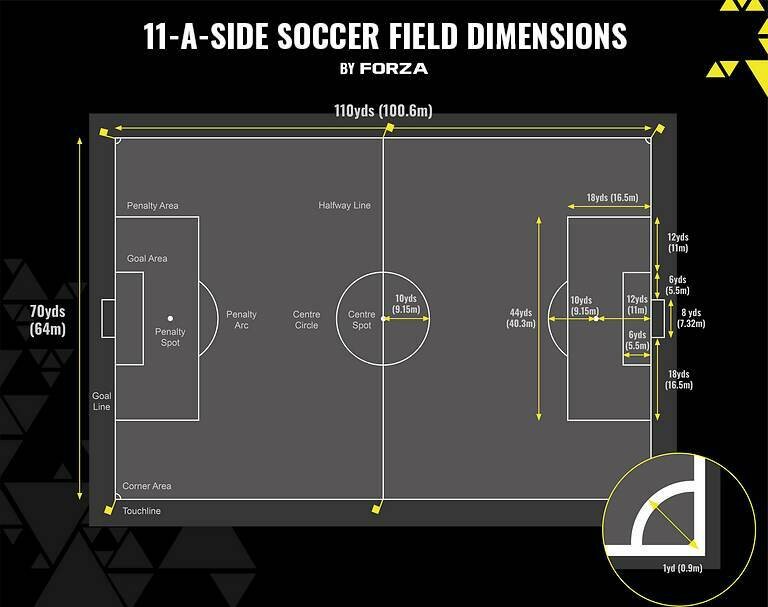
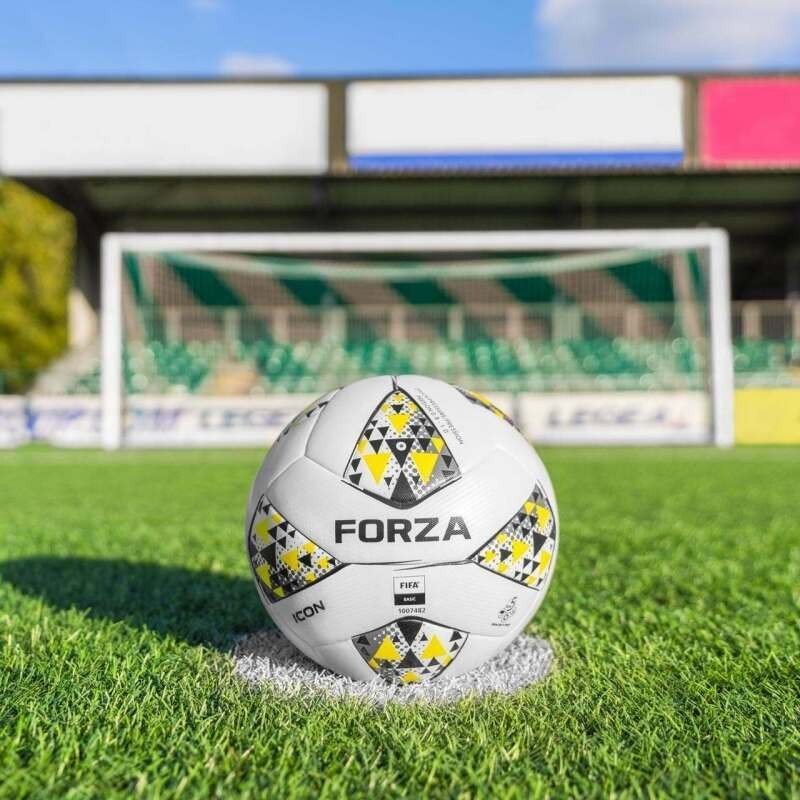
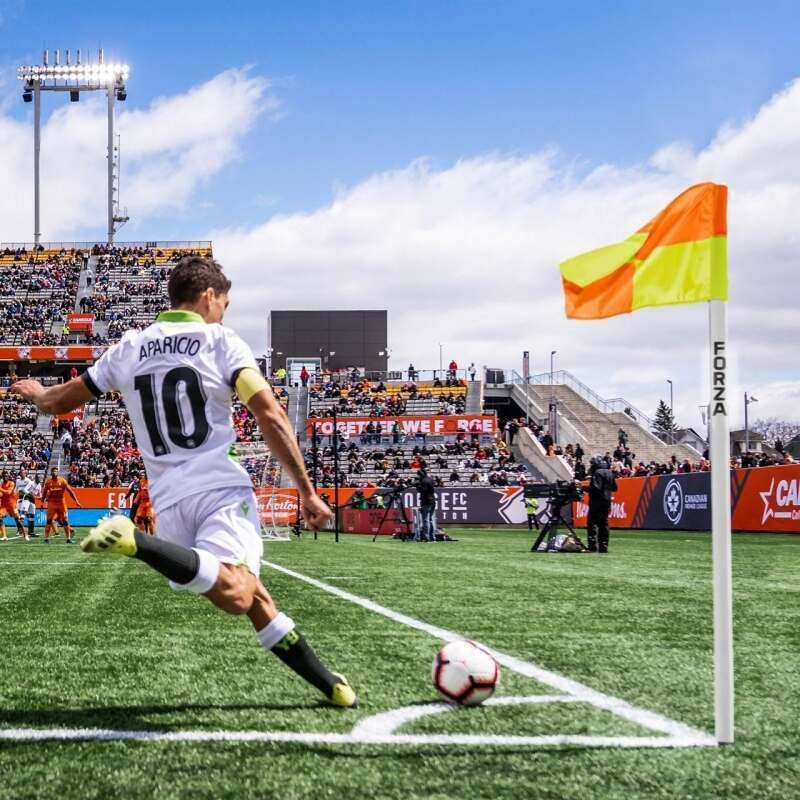
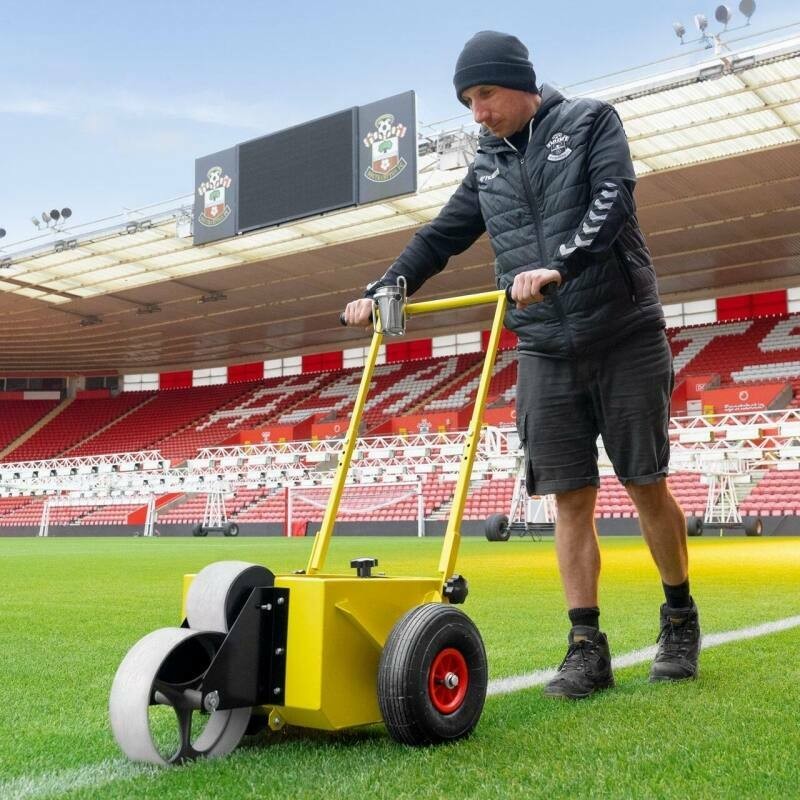
2. Soccer Field & Equipment Requirements by Age
What are the specific equipment and field requirements for each youth soccer age group? Different age groups have varying requirements for ball size, game format, and field dimensions. These specifications ensure that the game is tailored to the developmental stage of the players.
Under 6
Games for players aged 6 and under should be divided into 4 to 6-minute quarters without overtime. The ball should be a size 3, and teams should have a maximum of 3 or 4 players each, creating a 3 vs 3 or 4 vs 4 game with no goalkeepers. The recommended goal size is 6ft x 4ft. The soccer field should be 25-35 yards long and 15-25 yards wide.
Under 7 & 8’s
Under 7 & 8 players should have games divided into 4 to 12-minute quarters with no overtime. The ball used should be a size 3, and the number of players should be 4 vs 4 or 5 vs 5, without goalkeepers. The recommended goal size remains 6ft x 4ft, and the field size is the same as for Under 6’s: 25-35 yards long and 15-25 yards wide.
Under 9 & 10’s
For players at Under 9 & 10, the US Youth Soccer Association recommends games be divided into 25-minute halves. The ball should be a size 4 with a 7 vs 7 or 6 vs 6 player format, including goalkeepers. The recommended goal size is 18.5ft x 6.5ft. The soccer field should be 55-65 yards long and 35-45 yards wide.
Under 11 & 12’s
Games for under 11 & 12 players should use a size 4 ball and consist of two 30-minute halves, with two 10-minute overtime periods. The format can be 8 vs 8, 9 vs 9, 10 vs 10, or 11 vs 11. The soccer field should be 70-80 yards long and 45-55 yards wide.
Under 13 & 14’s
Regulated games for Under 13’s and 14’s are divided into two 35-minute halves, with two 10-minute halves for overtime. The ball should be a size 5, and each team should field 11 players. The soccer field should be the same size as a senior soccer field, with a length of 100-130 yards and a width of 50-100 yards.
Under 15 & 16’s
For under 15 and 16’s games, each game should consist of two 40-minute halves, with overtime divided into two 15-minute halves. The ball should be a size 5. The recommended soccer field size aligns with a full-size senior soccer pitch, meaning a width of 50-100 yards and a length of 100-130 yards.
Under 17s & Older
Senior soccer games are divided into two 45-minute halves, with two 15-minute halves for overtime. The ball should be a size 5. The recommended soccer field size for Under 17s & older teams is the same as a full-size senior soccer pitch, with a width of 50-100 yards and a length of 100-130 yards. For IFAB and FIFA-regulated soccer games, a senior international soccer field should be between 110 yards and 120 yards long and between 70 yards and 80 yards wide.
| FIFA Soccer Field Size Regulations for International Senior Games |
|---|
| Length |
| Minimum |
| Maximum |
3. High School Soccer Field Dimensions
What are the standard dimensions for high school soccer fields according to the NFHS? The National Federation of State High School Associations (NFHS) provides guidelines for high school soccer field dimensions, ensuring fair and consistent play across different schools. These standards help maintain the integrity of the game and provide a level playing field for all athletes.
Guidelines published by The National Federation of State High School Associations (NFHS) state that high school soccer fields should have a width of 55 to 80 yards and a length between 100 and 120 yards.
4. College Soccer Field Dimensions
What are the NCAA regulations for college soccer field dimensions? College soccer rules are set out by the NCAA. The official NCAA literature states that the field of play shall be rectangular, with a width not more than 75 yards or less than 70 yards and a length not more than 120 yards or less than 115 yards.
5. Soccer Field Dimensions by the Number of Players
How do soccer field dimensions vary based on the number of players in different game formats? Soccer field sizes can vary depending on the number of players, such as 5-a-side, 6-a-side, 7-a-side, 9-a-side, and 11-a-side games. These variations accommodate different age groups, skill levels, and available space.
Senior small-sided games have individual regulations set out by organizations including the World Mini Football Federation and the Socca Federation, which regulates international 6-a-side tournaments.
5-a-side Soccer Field Size & Markings
5-a-side soccer fields can vary significantly in size, often depending on the space available. Most international federations, including The Football Association, state that the field/court should have a length of 40 yards (36.5m) and a width of 30 yards (27.5m) for formalized and regulated games.
The goal area is a semi-circle with a radius of 6.5 yards (6m). A 5-a-side field/court should also have a center circle with a radius of 3.0 yards (2.75m). Goalposts should be 12ft x 4ft, although they can also be 16ft x 4ft depending on the regulations.
6-a-side Soccer Field Size & Markings
In the United States, the largest 6-a-side soccer organization is the National Indoor Soccer League. Played on artificial indoor fields, the official rules state that the field/court should be 200 feet (66.7 yards) long and 85 feet (28.3 yards) wide, with rounded corners.
The Socca Federation states that pitch dimensions can vary greatly for 6-a-side soccer. For international tournaments, the guidelines for pitch dimensions state that they be no less than 32.8 yards (30m) wide by 54.7 yards (50m) long, with the recommended size being 38.3 yards (35m) by 65.6 yards (60m). The minimum goal size should be 12ft x 6ft.
7-a-side Soccer Field Size & Markings
The most common size of a regulated 7-a-side soccer field is 60 yards (54.87m) long and 40 yards (36.58m) wide. For recreational games, the dimensions vary greatly, with recommended dimensions generally ranging from 50-65 yards (45.72-59.4m) in length and 25-50 yards (22.9-45.7m) in width. The International Football Association states that 7-a-side soccer fields should be 49.2-60.1 yards long and 27.3-38.3 yards wide. Goalposts are usually 12ft x 6ft.
9-a-side Soccer Field Dimensions
The Football Association states that a 9 v 9 soccer field should measure 80 yards (73.15m) x 50 yards (45.72m). It is recommended that games played on 9-a-side fields have goals that measure 21ft x 7ft.
11-a-side Soccer Field Dimensions
For 11-a-side senior soccer matches, the United States Soccer Federation (USSF) adheres to the international rules set out by IFAB. It is recommended that soccer fields measure 110 yards (100.6m) long and 70 yards (64.0m) wide.
For domestic recreational games, the length of a soccer field can vary from 100 yards (91.4m) to 130 yards (118.9m), while the width can be anywhere between 50 yards (45.7m) to 100 yards (91.4m), and still be in line with IFAB’s official Laws of the Game. For senior 11-a-side international games, IFAB states that soccer fields should measure 110 yards (100.6m) to 120 yards (109.7m) in length and 70 yards (64.0m) to 80 yards (73.2m) in width.
6. 11-A-Side Soccer Field Lines Explained
What are the standard markings and dimensions of an 11-a-side soccer field? The lines and layout of a soccer field are instrumental when it comes to the rules and gameplay. From determining if the ball is in or out of play, to deciding if a penalty or a free kick should be awarded, soccer field markings are important to understand as a player, coach, referee, or spectator.
Not only do soccer fields have regulations in terms of the overall width and length, but the different zones on the soccer field are also regulated to certain dimensions. Soccer field lines should be equally thick and not exceed 5 inches (12.7cm) according to FIFA regulations. The NCAA states that soccer pitch lines should be the same width and not less than 4 inches (10.16cm) or greater than 5 inches (12.7cm).
The Soccer Pitch Perimeter
The lines that define the rectangular shape of the overall soccer field are called the touchlines and the goal lines. The touchlines run the length of the field, and the goal lines run the width. When the whole of the ball crosses the touchline, it is out of play, and a throw-in is awarded to the team that didn’t touch the ball last. When the whole of the ball crosses the goal line, a corner kick is awarded to the attacking team if a defender touched the ball last, or a goal kick is awarded to the defending team if an attacker was the last player to touch the ball. If the whole of the ball crosses the goal line that spans the width of the goalposts, the attacking team is awarded a goal.
The Goal Area
The goal area is the rectangular area in front of the goalposts. It measures 6 yards (5.49m) from the goal line and is 20 yards (18.29m) wide. Goal kicks must be taken from within the goal area. If the defending team is awarded a free kick inside the goal area, they can take it anywhere within the goal area. The goal area also provides a buffer zone for free kicks and dropped balls. If the game is stopped for any reason other than a foul or misconduct, a dropped ball is used to restart the game. If the game is stopped when the ball is within the goal area, the drop ball must take place 6 yards from the goal line, on the edge of the goal area.
The Penalty Box
The penalty box, also referred to as the “penalty area,” is a rectangle marked in front of and to the sides of each goal. It is 18 yards (16.5m) from the center of the goal line and 44 yards (40.2m) wide. The width of the penalty box is normally marked by measuring 18 yards from each side of the goalposts. A full-size goal is 8 yards (7.32m) wide, so the total width of the penalty box is 44 yards (18 yards + 18 yards + 8 yards). The penalty box is the area where the goalkeeper is allowed to handle the ball. If a foul is incurred within the penalty box by the defending team, the attacking team is awarded a penalty kick taken from the penalty spot.
Penalty Spot
A penalty is awarded when a defending player either fouls an attacking player or handles the ball within the penalty box. The penalty spot, also known as the “penalty mark,” is where the ball is placed for penalty kicks. It is 12 yards (11.0m) out from the goal line, in line with the center of the goal. The penalty spot should be 9 inches in diameter.
Penalty Box Arc
The penalty box arc, sometimes referred to as “the D,” is placed on the far side of the penalty box, opposite the goalposts and goalline. The highest part of the penalty box arc is marked 10 yards (9.15m) from the penalty spot. The penalty arc is not part of the penalty box and is only used when a penalty is awarded. During normal gameplay (not a penalty shootout), only the goalkeeper and the penalty-taker can step inside the penalty box and the penalty arc. All other players must wait outside the penalty box and the penalty arc until the kick is taken.
Halfway Line
The halfway line marks the entire soccer field into two equal halves. It is marked across the width of the soccer field. The point at which the halfway line is marked is calculated by taking the total width of the field and dividing it by 2. If a soccer field is 100 yards long, the halfway line would be marked out across the field from a point that is 50 yards from each goalline. Players must stay within “their own half” during kick-off, which occurs at the start of the game, after half-time, and after a goal is scored. Players cannot be offside when they are within their own half of the field (the half of the field that the goal they are defending resides within).
Center Circle & Center Spot
Used to identify the center of the soccer field, the center spot is found directly in the middle of the field on the halfway line. The center circle has a diameter of 10 yards (9.15m) and is marked out from the center spot. During kick-off, the opposing team has to stand outside the center circle and within their own half of the field.
Corner Arc
Corner arcs dictate where corner kicks must be taken from. The corner arc is a quarter-circle with a 1-yard radius, measured from the base of the corner flag in each corner of the field. Attacking teams must place the ball within the corner arc when taking a corner kick.
7. Famous Soccer Field Dimensions
What are the dimensions of some of the most well-known soccer fields around the world? With soccer fields varying so much in size, you might be interested to know the dimensions of some of the most well-known soccer fields across the world.
| Famous Soccer Field Dimensions |
|---|
| Club |
| Manchester United |
| Liverpool |
| Wrexham |
| N/A |
| LA Galaxy |
| DC United |
| Real Madrid |
| Barcelona |
8. Soccer Field FAQs
Here are some frequently asked questions about soccer field dimensions and related topics:
Why is a soccer field called a pitch?
In the UK, a soccer field is usually called a “football pitch”. The word “pitch” is derived from the sport of cricket, which has a specific area called a pitch. When the sport was first regulated and played in the UK in the 1800s, soccer fields did not exist, and most games were played on cricket fields. The word “pitch” in old English means “to thrust (something) in,” and in cricket, the pitch is the area between both sets of stumps. To play soccer on a cricket field, the cricket stumps would have to be removed from the cricket pitch. This eventually led to the term “football pitch” being used to refer to a modified cricket field where soccer could be played.
How many acres are in a soccer field?
A FIFA-regulated international soccer field has a total area between 1.59 and 1.99 acres. A typical professional soccer field with a length of 115 yards and a width of 75 yards has a total area of 1.78 acres.
How big is a World Cup soccer field?
A soccer field used in the FIFA World Cup must have a length of 110-120 yards and a width of 70-80 yards. In meters, a World Cup soccer field should be 110-110m long and 64m-73.2m wide.
How big is a soccer field in feet?
Soccer fields can vary in size. However, an international soccer field must measure between 330-360 feet in length and 210-240 feet in width. International soccer fields have a total surface area between 69,300 and 86,400ft².
How many laps around a soccer field is a mile?
As soccer fields vary in size, the number of laps required to complete a mile also varies. Most professional soccer fields are approximately 115 yards long and 75 yards wide, making one lap 380 yards. A mile is equal to 1,760 yards, so 4.6 laps of a typical professional soccer field equal 1 mile.
Is a soccer field bigger than a basketball court?
Yes, a soccer field is significantly bigger than a basketball court. An NBA basketball court is 31.3 yards long and 16.7 yards wide, with a total area of 522.71 yards². A typical professional soccer field is 115 yards long and 75 yards wide, with a total surface area of 8,625 yards².
Is a soccer field bigger than a football field?
A soccer field is larger than a football field. Most professional soccer fields are approximately 115 yards long and 75 yards wide, while football fields are 120 yards long and 53 yards wide. A typical professional soccer field has a total surface area of 8,625 yards² (1.78 acres), while a football field has a surface area of 6,360 yards² (1.31 acres).
How many players are on a soccer field?
There are 11 players on each team during a regulated soccer game. One player on each side must be the designated goalkeeper. For FIFA-regulated games, there must be at least 7 players on each team. If a team has fewer than 7 players available due to injuries or red cards, the game is abandoned.
What equipment do I need to mark out a soccer field?
To mark out a soccer field, you will need line marking equipment, including line marking paint and a line marking machine. Groundskeepers typically use a measuring tape and/or a metric measuring wheel to calculate the location of the lines and zones, along with line marking accessories, including line marking pins or stakes.
9. Need Expert Advice on Sports Field Dimensions?
Are you struggling to find accurate information about sports field dimensions or need assistance with your sports-related projects? Do you feel overwhelmed by the complexity of regulations and guidelines for different sports and age groups? At HOW.EDU.VN, we understand these challenges and offer a direct line to top-tier experts who can provide tailored solutions.
Connect with Leading Experts
HOW.EDU.VN connects you with over 100 renowned PhDs and experts worldwide, ready to provide personalized advice and solutions. Imagine having a seasoned professional guide you through every step, ensuring accuracy and compliance in your sports-related endeavors.
Why Choose HOW.EDU.VN?
- Expert Guidance: Access a diverse team of specialists in sports field dimensions, regulations, and more.
- Personalized Solutions: Receive custom advice tailored to your specific needs and challenges.
- Time and Cost Savings: Avoid costly mistakes and save time by getting it right the first time with expert assistance.
- Confidentiality: Your consultations are private and secure, ensuring peace of mind.
Ready to Get Started?
Don’t let uncertainty hold you back. Contact HOW.EDU.VN today and connect with our experts to gain the insights and solutions you need.
Contact Information:
- Address: 456 Expertise Plaza, Consult City, CA 90210, United States
- WhatsApp: +1 (310) 555-1212
- Website: HOW.EDU.VN
Take the first step towards achieving excellence in your sports projects. Reach out to how.edu.vn now and experience the difference expert guidance can make.